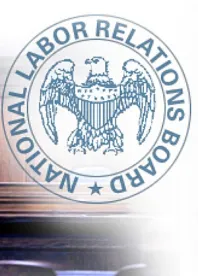On July 30, 2013, the United States Senate confirmed all five of President Obama’s nominees to the National Labor Relations Board (“NLRB” or the“Board”), marking the first time in 10years that the NLRB has a full complement of members. The Board now includes three Democrat members (Board Chairman Mark Gaston Pearce, Kent Hirozawa, and Nancy Schiffer) and two Republican members (Philip Miscimarra and Harry I. Johnson III). Prior to the confirmation of these members, as highlighted in the United States Court of Appeals for the D.C. Circuit’s decision in Noel Canning,[1] doubts existed as to whether the Board’s decisions were valid given its lack of a legitimate quorum of members. The confirmation of these new members has removed any such doubts and, accordingly, the focus now turns to what employers can expect from this Board going forward.
While it is impossible to know what the NLRB’s agenda will entail, it is likely, given the makeup of the Board, that it will: (i) continue its pro-union agenda; (ii) continue its efforts to protect non-unionized employees through a broad interpretation of employees’ Section 7 rights;[2] and (iii) revisit rules and regulations that have been struck down in federal courts.
The Continuation Of A Pro-Union Agenda
It is no secret that the NLRB has had a pro-union agenda for a number of years. This agenda is unlikely to change in the near future, particularly given the political make-up of the newly confirmed Board. For instance, in one of the few decisions issued by the Board since its confirmation at the end of July, the Board affirmed a decision of an administrative law judge (“ALJ”) finding that an employer improperly interfered with an employee’s Section 7 rights, even though the ALJ admittedly found the complainant to be an incredible witness.
In the matter of Kaiser Permanente, Kaiser Found. Hosps. , 360 N.L.R.B. No. 2 (Sept. 17, 2013), the NLRB confirmed the ALJ’s finding that an employer violated the complainant’s Section 7 rights by threatening to report the complainant to human resources if she continued her outbursts in team huddles about the pace of her work and complaints about another employee’s work schedule. The ALJ found that since these complaints were about “wages, hours and working conditions, and, thus concerted activity” the employer’s threat to report the employee to human resources if she continued such actions violated the complainant’s
Section 7 rights. The Board affirmed this finding even though the ALJ expressly found, “I did not find [the complainant] to be a credible witness . . . [and that] [s]he seemed mainly focused on furthering her agenda on behalf of the [union], and less so on testifying truth- fully.”[3] Given the Board’s willingness to affirm the ALJ’s decision, despite the ALJ’s questioning of the veracity of the complainant’s testimony and the ambiguity of the events in question, it is evident that the Board will continue with its expansive reading of what constitutes protected concerted activity and will give employees the benefit of the doubt where an employer’s actions are in dispute.
Outreach To Non-Union Employees
Over the past few years, the NLRB has expanded its reach into the business practices of non-unionized workforces. For instance, the NLRB has issued a number of rulings striking down employer policies finding that the policies interfered with an employee’s right to engage in protected concerted activity under Section 7 of the NLRA. More specifically, in the past year, the NLRB has issued decisions striking down (i) policies regarding the confidentiality of employer investigations; (ii) policies regarding the dissemination of confidential information; and (iii) social media policies. The common link in all of these decisions is that the Board has taken an expansive view of what constitutes an employee’s Section 7 rights and a restrictive view of employer policies that might, in any conceivable way, infringe on Section 7 rights. For example, in the matter of The Boeing Co. , No. 19-CA-089374 (July 26, 2013), an ALJ for the NLRB held that a policy that “directed” employees to abstain from discussing ongoing workplace investigations with other employees violated federal labor laws because it infringed on the right of employees to discuss the terms and conditions of their employment. Going one step further, the ALJ also found that a policy that “recommended” that employees not discuss ongoing investigations was also unlawful because there was nothing in the policy that explained to employees that they were free to discuss the investigation if they chose to do so. The ALJ reached these conclusions despite recognizing that employers have a valid interest in keeping investigations confidential, including protecting the integrity of investigations and preventing retaliation against complainants. As evidenced by the reasoning in The Boeing Co. , the NLRB has been willing to overlook important employer concerns in order to effectuate its broad interpretation of employee Section 7 rights. It is likely, given the make-up of the newly appointed members, that such broad interpretations will continue, and employers can expect to have their policies challenged regardless of the reasoning behind such policies.
Revisiting Proposed Regulations After Legal Challenges
The NLRB has recently suffered a number of legal setbacks to its proposed regulations. However, now that the Board is fully staffed, it is likely that the NLRB will attempt to revisit many of these proposed regulations. For example, one proposed regulation that the Board will likely revisit is the so-called Quickie Election Rule, a rule that drew significant criticism when it was first introduced. The Quickie Election Rule was initially issued by the Board in 2011 and would have resulted in a dramatic shortening of the time between the filing of a union election petition and the election itself by limiting the ability of employers to be heard on preelection and post-election disputes. The rule sought to achieve this purpose by requiring the Board’s regional directors to set a pre-election hearing to begin just seven days after the hearing notice is served, and a post-election hearing to begin only 14 days after the ballots are tallied. In addition, the rule sought to limit the issues employers have historically raised in the pre-election process. However, the implementation of the Quickie Election Rule was stayed by a decision of the United States District Court for the District of Columbia, which found that the rule was improperly adopted with only two Board member votes. Now that the Board has a full slate of members, and its rules can no longer be challenged due to the lack of a statutory quorum, it is likely that the Quickie Election Rule will be reissued in the near future.
Similarly, the Board may also continue its battle to implement its poster rule. In August 2011, the NLRB issued a rule that would have required most employers to post on their properties and on their websites a “Notification of Employee Rights under the National Labor Relations Act.” These posters would, among other things, inform employees about their rights to join a union, bargain collectively, discuss wages and benefits, and to strike and picket. The poster would also provide examples of unlawful employer and union conduct, and would provide information on how to contact the NLRB. Over the past few months, however, the poster rule has been struck down by two federal circuit courts of appeal, the D.C. Circuit and the Fourth Circuit. The D.C. Circuit and Fourth Circuit have also denied the NLRB’s request for reconsideration. Despite these unfavorable rulings, it is likely that the NLRB will not give up on the poster rule and will continue its appeal to the Supreme Court and, depending on the Supreme Court’s ruling, may revise the rule to address the concerns raised by the appeals courts.
Conclusion
Over the past few years, despite not having a complete slate of Board members, the NLRB has aggressively pursued a pro-union agenda, increased its outreach to non-union employees, and increased its impact on the non-unionized workforce through its expansive interpretation of employee Section 7 rights. This pro-union agenda is not likely to change now that a full Board has been approved by Congress. If anything, it is likely that the Board will become more aggressive, given that its authority can no longer be questioned due to a shortage of Board members. In light of this, employers must be prepared by taking proactive steps to ensure that their policies and procedures are in accordance with applicable laws and regulations, and that they are capable of handling prosecutions, audits and other inquiries from the NLRB.
This article appeared in the November 2013 issue of The Metropolitan Corporate Counsel.
1. Noel Canning v. National Labor Relations Board, 705 F.3d 490 (D.C. Cir. 2013).
2. Section 7 of the National Labor Relations Act (“NLRA”) defines protected activity and provides that employees shall have the right to, among other things: (i) engage in protected concerted activity; (ii) form or attempt to form a union among company employees; (iii) join a union; (iv) assist a union to organize; (v) strike for better wages/working conditions; and (vi) not participate in activity on behalf of a union.
3. The ALJ did find the complainant’s testimony regarding the ultimate




 />i
/>i

